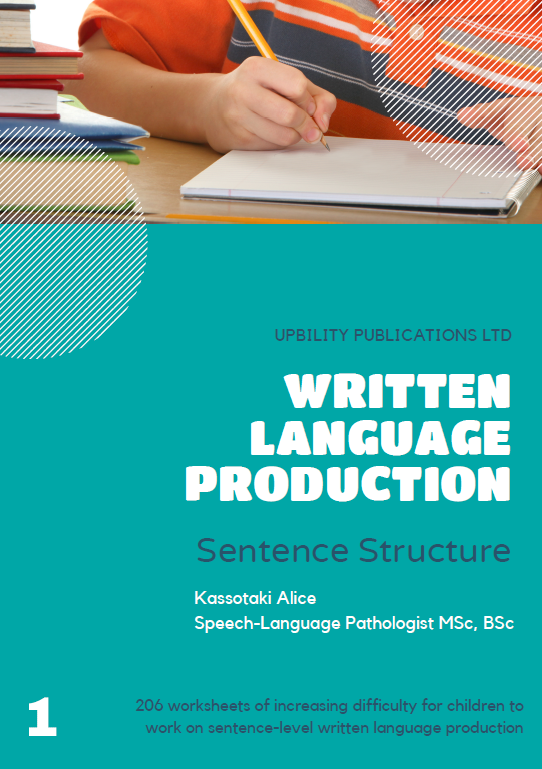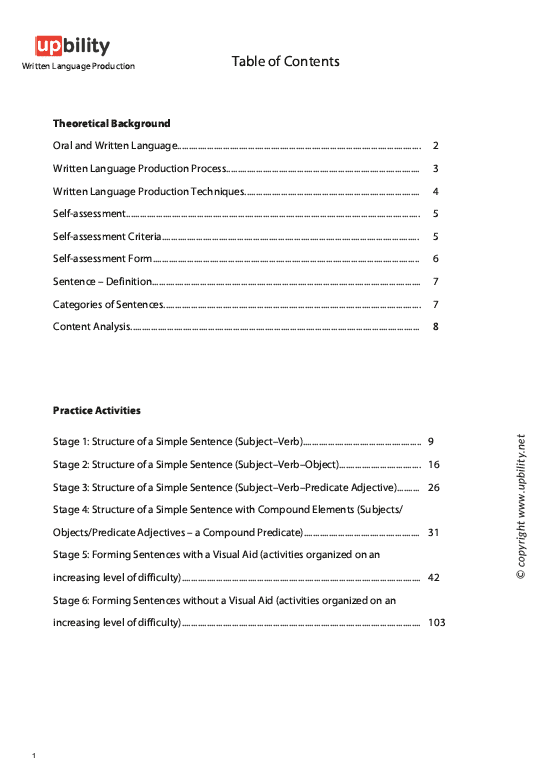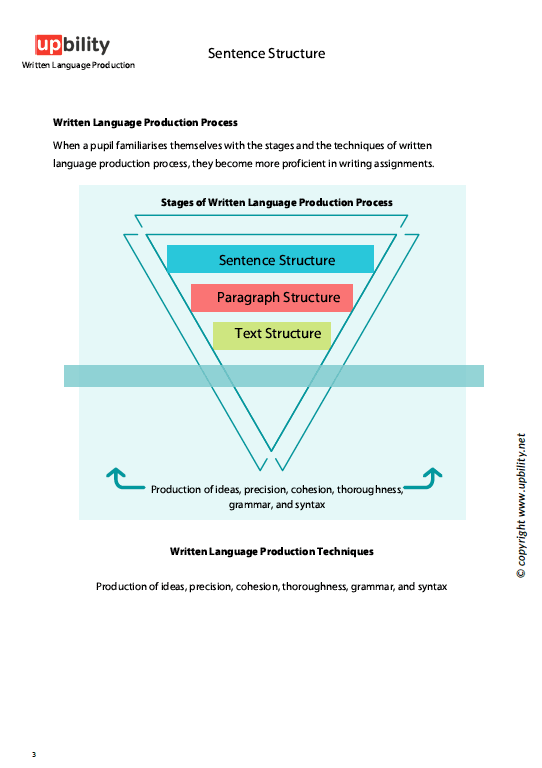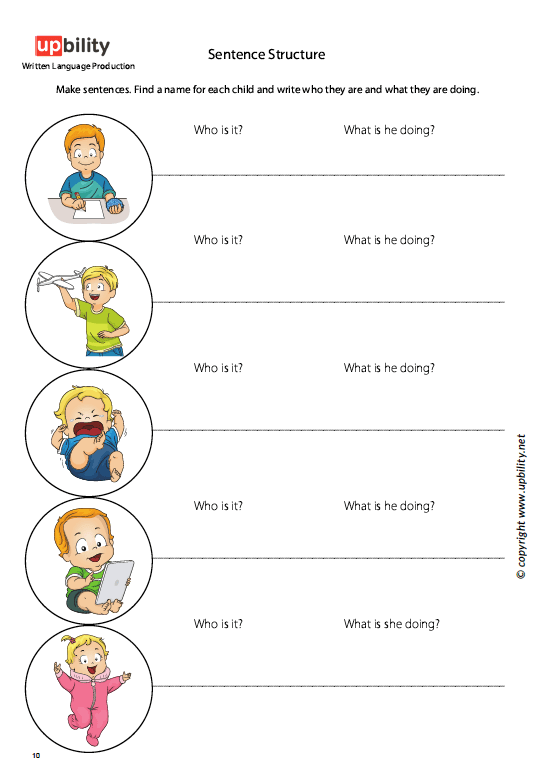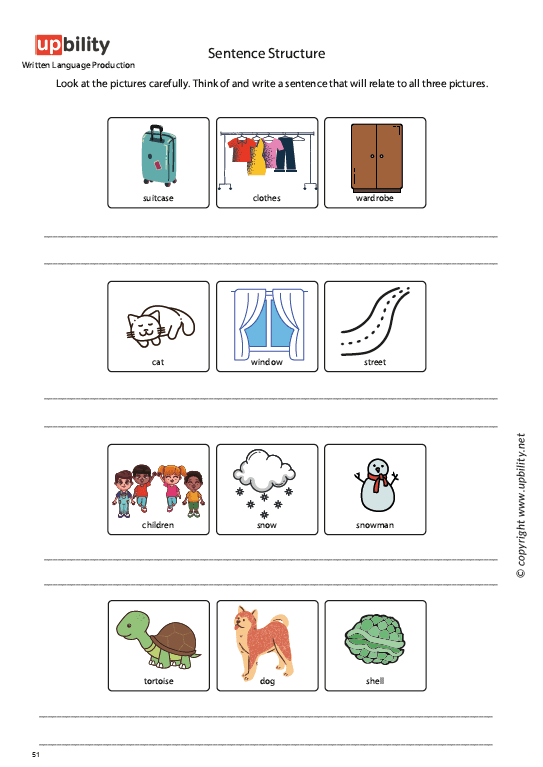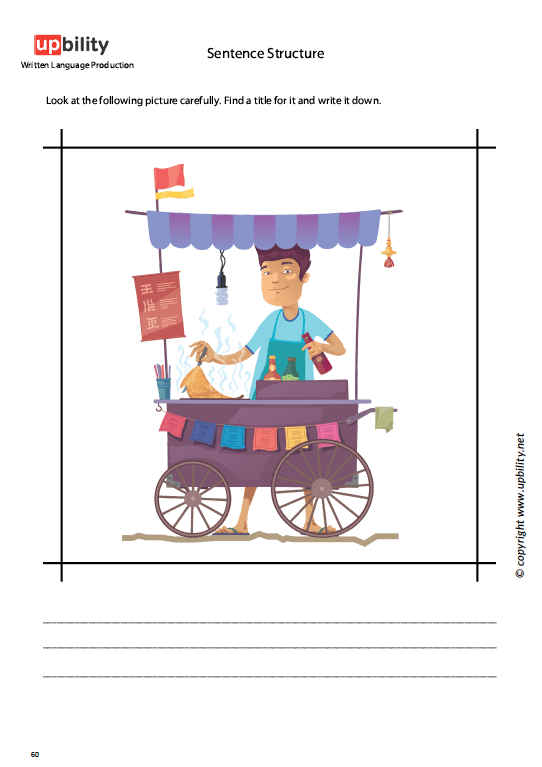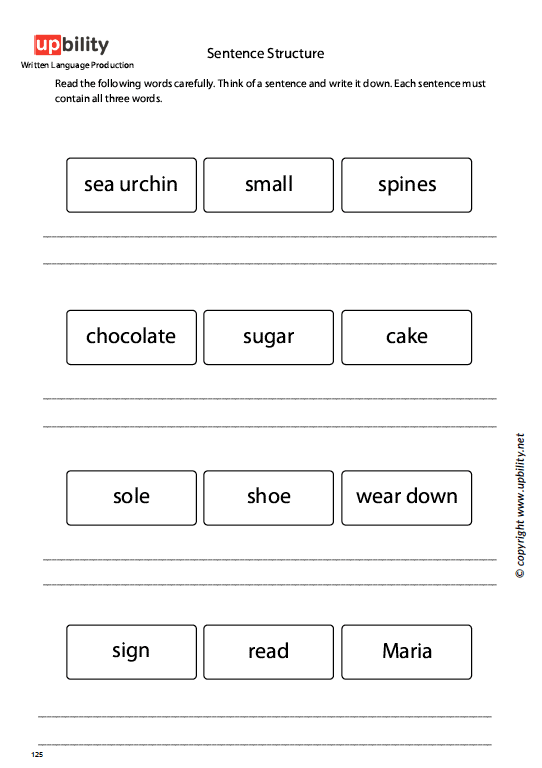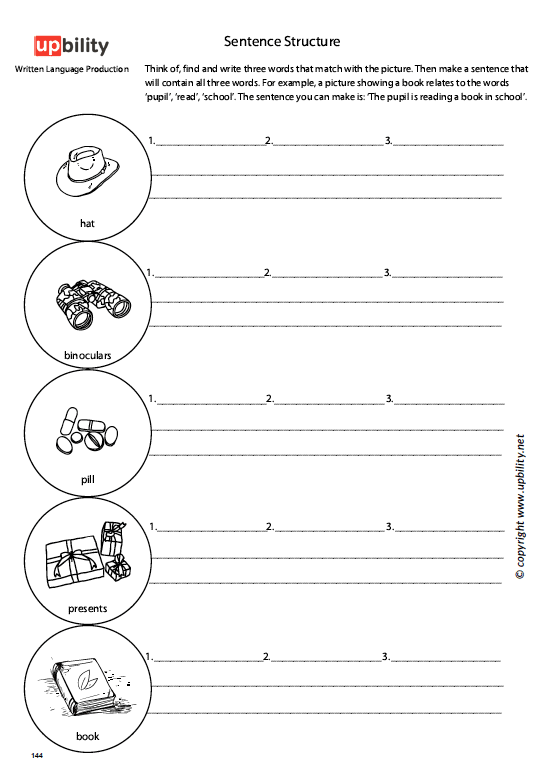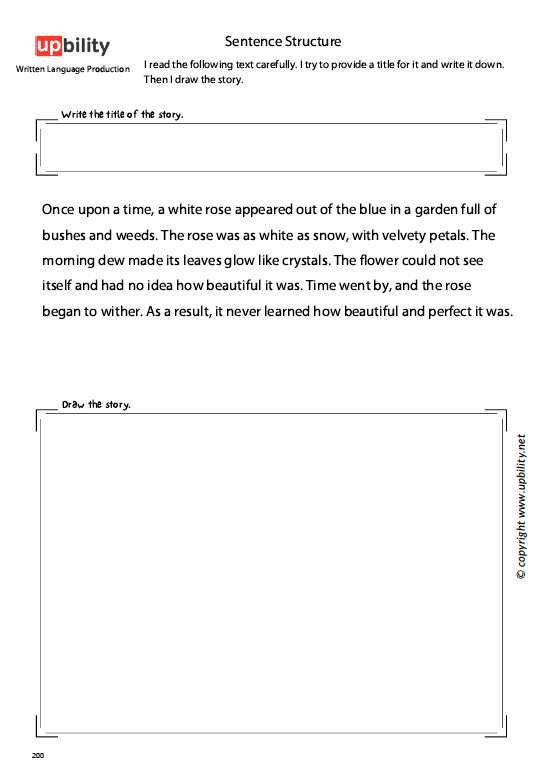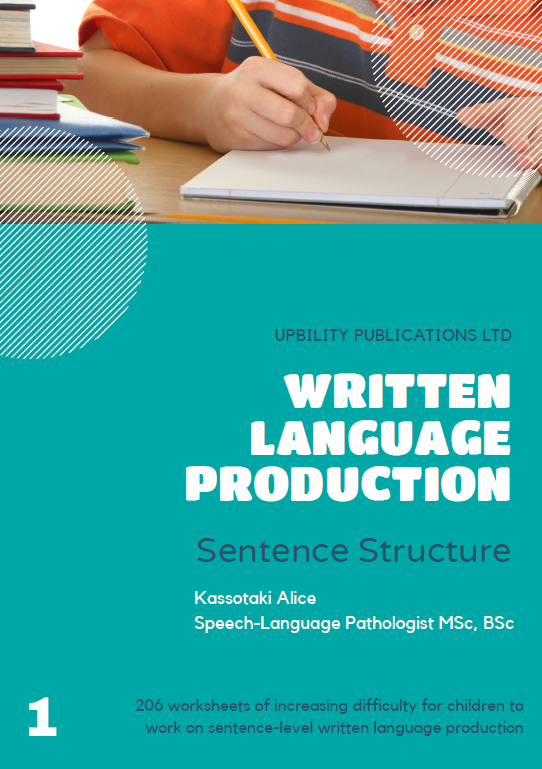Written Language Production | SENTENCE STRUCTURE
Available
Written Language Production | SENTENCE STRUCTURE - is backordered and will ship as soon as it is back in stock.
Description
Description
Sentence Structure
Age Group : 7+
It consists of a brief theoretical section and 206 worksheets organized on an increasing level of difficulty to facilitate the development of written skills in six stages:
- Stages 1–3: Structure of a Simple Sentence
- Stage 4: Structure of a Simple Sentence with Compound Elements
- Stage 5: Forming Sentences with a Visual Aid
- Stage 6: Forming Sentences without a Visual Aid
Oral and Written Language
Language can be oral and written. It requires the operation of complex mechanisms. Oral language includes listening and speaking, while written language reading and writing.
Speaking/listening and writing/reading constitute the two fundamental means of language production and perception. Oral language is direct and has many paralinguistic features, including tone of voice, eye contact, style, body posture, and gestures. Paralinguistic elements of communication play an important role in how meaning is conveyed, helping listeners interpret content appropriately (Barton). On the other hand, written language lacks all the above-mentioned paralinguistic features. It is not direct and does not encourage feedback (Barton).
Check also the book "Written Language Production | PARAGRAPH STRUCTURE".
Specifications
Specifications
-
Book format
-
SKU
-
Age
-
Number of pages
-
Dimensions
-
Author
-
Pagination
-
Translation & Proofreading
-
Year of publication
Contents
Contents
Author
Author
Age
School-aged children
Author
Alice Kassotaki - Speech Language Pathologist MSc, BSc
Secure Payments
All major methods accepted — fully protected from checkout to delivery.

